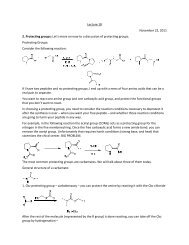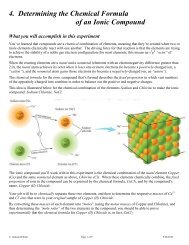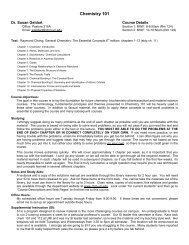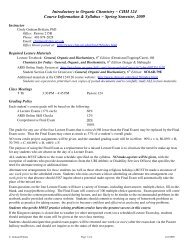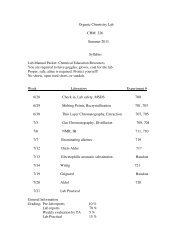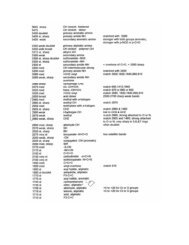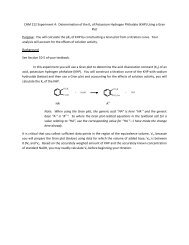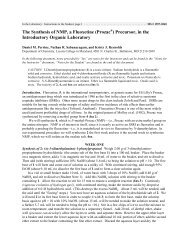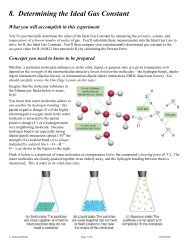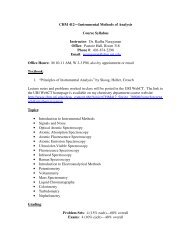Firearm Identification in the Forensic Science Laboratory
Firearm Identification in the Forensic Science Laboratory
Firearm Identification in the Forensic Science Laboratory
You also want an ePaper? Increase the reach of your titles
YUMPU automatically turns print PDFs into web optimized ePapers that Google loves.
THE SCIENCE OF<br />
FIREARM IDENTIFICATION<br />
THE HISTORY of <strong>the</strong> science of forensic firearm<br />
(and toolmark) identification, and its court acceptance,<br />
spans over 100 years <strong>in</strong> <strong>the</strong> United States. The pr<strong>in</strong>ciples<br />
and <strong>the</strong> primary tools used <strong>in</strong> <strong>the</strong> science have<br />
changed very little dur<strong>in</strong>g this time. The comparison<br />
microscope, <strong>the</strong> primary tool used by <strong>the</strong> profession,<br />
has not changed <strong>in</strong> its basic design for almost 80 years.<br />
Before this <strong>in</strong>strument became available, exam<strong>in</strong>ers relied<br />
on photomicrograph comparisons to determ<strong>in</strong>e<br />
identity of fired bullets or cartridge cases, which was a<br />
time consum<strong>in</strong>g and laborious method. (The terms cartridge<br />
case, cas<strong>in</strong>g, and case will be <strong>in</strong>terchangeable <strong>in</strong><br />
usage.) With <strong>the</strong> eng<strong>in</strong>eer<strong>in</strong>g of <strong>the</strong> “optical bridge,”<br />
two compound microscopes were jo<strong>in</strong>ed toge<strong>the</strong>r, giv<strong>in</strong>g<br />
<strong>the</strong> exam<strong>in</strong>er <strong>the</strong> ability to observe and compare<br />
two objects at <strong>the</strong> same time under magnification. The<br />
genesis of <strong>the</strong> modern comparison microscope was accelerated<br />
with <strong>the</strong> addition of microscope stages that<br />
were designed for <strong>the</strong> mount<strong>in</strong>g of fired bullets, cases,<br />
and o<strong>the</strong>r items bear<strong>in</strong>g toolmarks. The science of<br />
firearm identification was soon propelled forward <strong>in</strong><br />
forensic <strong>in</strong>vestigations <strong>in</strong> this nation and worldwide.<br />
Today, firearm units <strong>in</strong> crime laboratories might use<br />
o<strong>the</strong>r complimentary microscopic and photographic<br />
<strong>in</strong>strumentation, but for matters concern<strong>in</strong>g <strong>the</strong> identification<br />
of toolmarks on fired bullets, cases or any<br />
o<strong>the</strong>r object, <strong>the</strong> comparison microscope is an absolutely<br />
necessary <strong>in</strong>strument.<br />
The recent computer technology for search<strong>in</strong>g image<br />
databases for presumptive l<strong>in</strong>kages is demonstrated by<br />
<strong>the</strong> <strong>in</strong>stallation and use of <strong>the</strong> National Integrated Ballistic<br />
Information Network (NIBIN). NIBIN has a firm<br />
foundation of acceptance <strong>in</strong> <strong>the</strong> forensic science community<br />
and <strong>the</strong> courts.<br />
As was described previously, <strong>the</strong> forensic science of<br />
firearm identification is a specialized sub-specialty of<br />
toolmark identification specifically related to <strong>the</strong><br />
firearm mechanism’s work<strong>in</strong>g surfaces. The firearm is<br />
made up of a number of tools, many of which come<br />
A comparison microscope<br />
<strong>in</strong>to contact with, and leave toolmarks on <strong>the</strong> softer<br />
metal of <strong>the</strong> cartridge case and/or bullet. The firearm,<br />
as with any o<strong>the</strong>r tool, has features that were designed<br />
by <strong>the</strong> factory. Features that are determ<strong>in</strong>ed by <strong>the</strong> manufacturer<br />
<strong>in</strong>clude <strong>the</strong> size of <strong>the</strong> cartridge chambered<br />
by <strong>the</strong> firearm, <strong>the</strong> orientation of <strong>the</strong> extractor and<br />
ejector, and <strong>the</strong> number, width and twist direction of<br />
<strong>the</strong> land and grooves of <strong>the</strong> barrel rifl<strong>in</strong>g. These characteristics<br />
can be imparted as toolmarks on <strong>the</strong> fired<br />
bullet and case dur<strong>in</strong>g fir<strong>in</strong>g, and can be classified by<br />
<strong>the</strong>ir class characteristics. These class characteristics are<br />
typically <strong>the</strong> first classification of toolmark evidence that<br />
<strong>the</strong> exam<strong>in</strong>er seeks <strong>in</strong> <strong>the</strong> exam<strong>in</strong>ation. Class characteristics<br />
help narrow <strong>the</strong> population of potential firearm<br />
sources. The follow<strong>in</strong>g experience common to us all<br />
gives an example of sort<strong>in</strong>g us<strong>in</strong>g class characteristics:<br />
You are leav<strong>in</strong>g a store and have to f<strong>in</strong>d your<br />
car <strong>in</strong> a large, crowded park<strong>in</strong>g lot. You beg<strong>in</strong> by<br />
look<strong>in</strong>g for a certa<strong>in</strong> vehicle type (SUV, convertible,<br />
sedan, etc.), make (Ford, Chevy, Volvo, etc),<br />
8 F I R E A R M I D E N T I F I C AT I O N I N T H E F O R E N S I C S C I E N C E L A B O R AT O RY




